Organic Indigo Farm House
- Latest Blog
- 0 likes
- 4954 views
- 0 comments

Indigo dyed items are becoming more and more popular and are sold widely because of the charm of its beautiful faded blue hue, and the cool feeling it gives when you are wearing it.
Normally when we had to dye the indigo, we had to buy the indigo dye per kilogram from the market and then treat it in containers to get it ready for the dyeing process.
Many people found that process to be quite difficult already, because it is a long process and needs love and care almost like a senior family member needs a well treated.
Have you ever thought about, or even wondered how indigo is extracted?
Or what compounds are added to treat indigo?
I heard that some people added a seasoning powder during the process.
They say they just add a little powder, but I still can't figure out how much a little is.
For our foods, we always try to find reliable restaurants or food vendors to make sure that our food is safe from glutamate.

Now, we really have to say that we were absolutely super lucky to find “Baan Ton Kramâ€(which means Indigo farm house in Thai).

Here, we found a great source of real genuine indigo extracts.
The organic indigo indeed!!
Yes, you read it correct! They do completely organic in their private sector without chemical agents for several years now. Mr.Sak, who we rather call brother Sak, is the farm owner. He puts a lot of his effort and energy in changing organic paddy into his indigo farm in an area of 4800 sq.m., all because of his passion for textile, and especially for the indigo.
Originally, he was not a farmer but someone who cared for his health and intended to grow organic rice for household consuming.
He still stores his organic rice from last year, enough for consuming until the next season some so he doesn't need paddy this year and can turn his land into a beautiful green indigo.
Therefore, indigo is a legume plants as well as giving the indigo dye; it also has agronomic characters to maintain soil fertility.

A real nice statement of how organic his farm is, it is provenby the spider's spin on the grounds there, being a splendid witness to this as well as many other animals living happily there too.
Doing indigo farm wasn't a project for brother Sak that came out of the blue.
Because of his love for textile, brother Sak has gathered all the knowledge available gradually from many gurus and also from travelling to Isan several times.
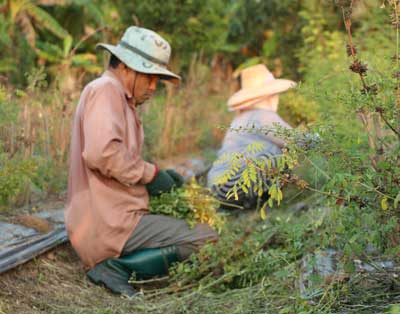
He began his quest for good sources of the seeds, he learned how to grow and treat the indigo well enough, until he finally achieved a real fine and smooth texture of blue dye ultimately, and then knew his time had begun.
The first harvest of his 4800 sq.m. gave almost 600 kilograms of extracted indigo.
We proudly took his first extracted to dye our weaving cotton yarn, and the indigo from trusted source could completely be called genuine organic indigo.
Last month, sister Mai took me along to brother Saks farm, it being the season for the second harvest. Brother Sak told us that one crop is capable to give 3 harvests, but the second harvestedis more tough and gains less indigo extracted.
That's made him do even more research and do more experiments to find even better solutions for future.
From their conversation, I also learned that indigo has 2 types; one which has the straight beans and the other with curved beans.

We arrived the farm in the evening and it was the perfect moment to see them harvest and do the whole processes of indigo extraction.
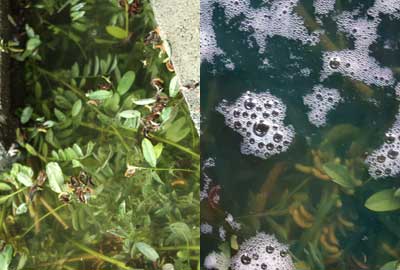

To create the blue dye, we had to soak the foliage for about 15 hours and after that it will give the clear light blue water with a little foam, then fill it with red lime (a mixture of lime and turmeric; mostly use for food preservations); and during this process it created a real beautiful color mix of orange and blue.

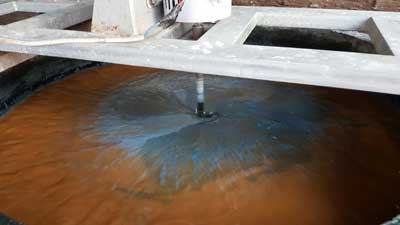
Next, the spinning duty was up to the machine to spin it thoroughly.

During this process, I imagined the former processes by hand when the cultivators had to put their endeavour by hand to fill enough air.
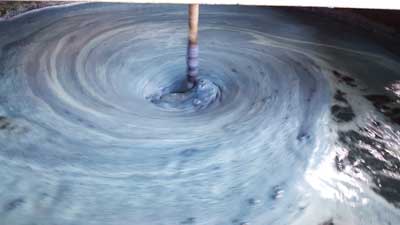
When the machine begins it creates an enormous amount of foam, that we had to keep spinning until the foam was entirely gone and to get the crystal-clear blue water.

During this process, it really felt like the indigo was alive and was chitchatting to each other by making a “sob sab sob sab†sound. :P

My all-time favorite process is, beyond their sound, they also give wonderful signature indigo smell all over the area.
When the spinning process is finished, we wait for the indigo solution to slowly settle down and be separated into layers.

The indigo-lime mix became a film floating on top of the layer because it is lighter than water.
In this part of the process they had to drain the water as much as they can until only the blue dye remained.
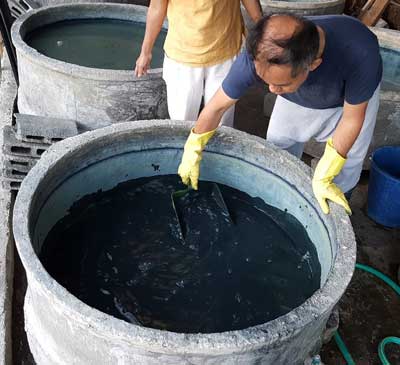
During this wonderful learning and observation trip, I have seen a very strong passion turn into an accomplishment, after gathering enough knowledge in every essential detail.
I can't emphasis this enough, because we can never earn any skill from doing nothing ourselves.
Knowledge gives us confidence and the ability to control all the factors involved.
The key to this success is to act carefully, evaluate and find proper solutions over and over until we gain enough experience and knowledge to eventually become fully skilled.

For all of you who may have inspiration to do something, don't procrastinate, just collect the essential knowledge and get into action with an open mind and willing to keep learning and the success will be yours.
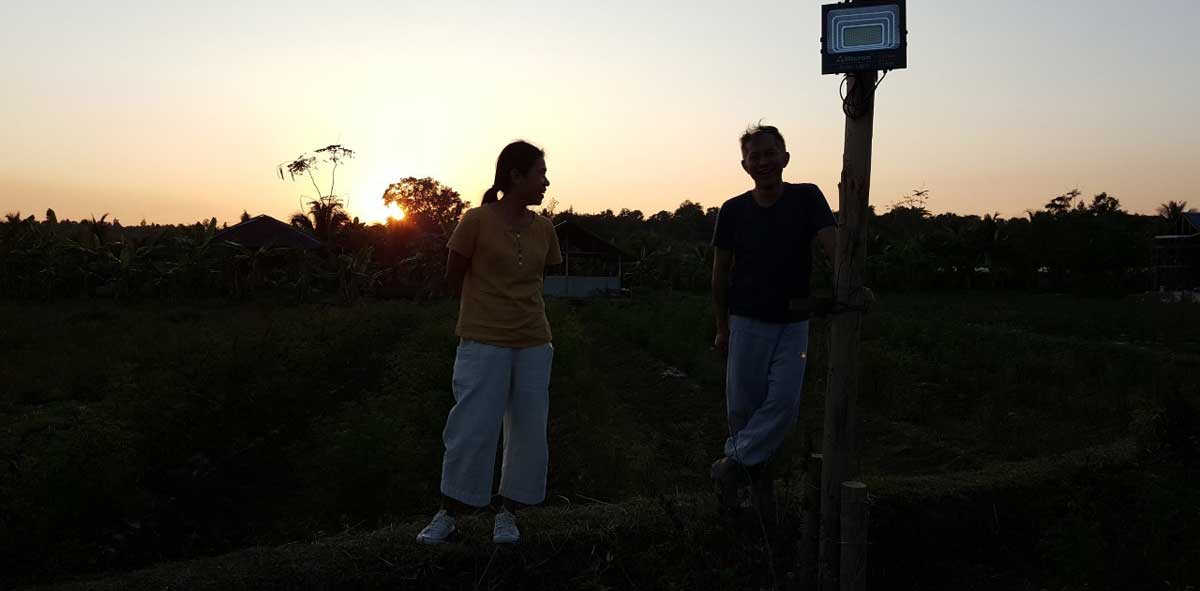
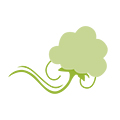
ChiangmaiCotton




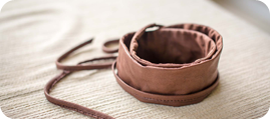
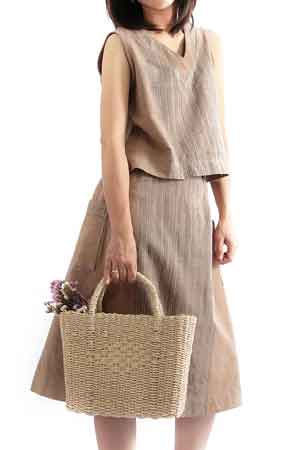
Comments (0)